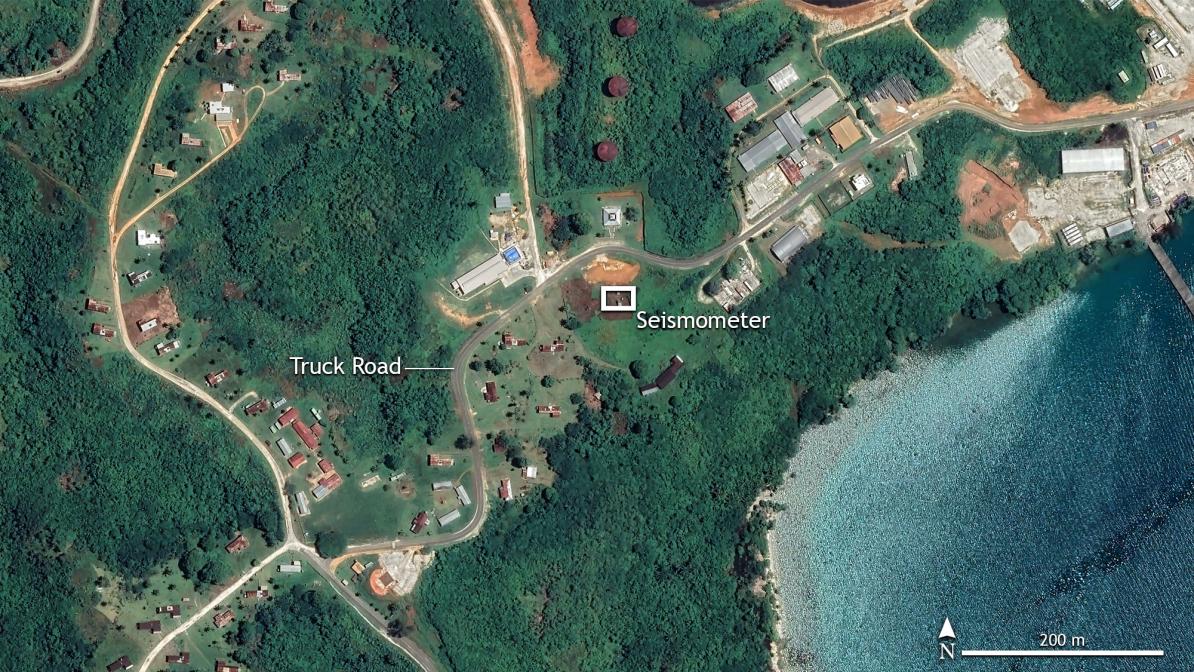Contentious claims that an interstellar meteor possibly containing alien technology hit Earth a decade ago is on even shakier ground – quite literally. Last year, pieces of the meteor were collected from the ocean off Papua New Guinea, though later analysis brought into question the “alien tech” nature of the spherules recovered. Now, it appears the soundwaves the team claimed were linked to the fireball were actually from the shaking of a nearby truck driving past.
What we do know is that a meteor entered the atmosphere on January 8, 2014 – burning brightly as it did so. Using a recording from a seismometer on Manus Island in Papua New Guinea that they linked to the meteor, controversial and prolific Harvard professor Avi Loeb and his team calculated that the speed of the object was consistent with an interstellar object. If confirmed, it would be only the third interstellar visitor to the Solar System known, and the first to hit Earth. The recording also led them to propose a location in the ocean where the debris might have landed and sunk.
In 2022, US military officials confirmed the interstellar object and the meteor’s official name CNEOS 2014-01-08 came to be used interchangeably with Interstellar Meteor 1. However subsequent analysis suggests that the speed of the object was substantially overestimated, and may not be of interstellar origin after all.
Loeb and colleagues went to Papua New Guinea and collected samples of these spherules, without the permission of the country itself, which has since accused them of “theft”. The spherules contained peculiar elements which led the team to suggest, among other hypotheses, that “this unfamiliar abundance pattern may reflect an extraterrestrial technological origin.”
Now, a team from Johns Hopkins University argues that their seismic analysis is wrong too. What they linked to the meteor was “almost certainly” the motion of a truck moving on a nearby road. What’s more, they put forward evidence that the meteor entered the atmosphere elsewhere and if fragments did land in the ocean they did so in a completely different place to where Loeb and team calculated.
“The signal changed directions over time, exactly matching a road that runs past the seismometer,” Benjamin Fernando, a planetary seismologist at Johns Hopkins who led the research, said in a statement. “It’s really difficult to take a signal and confirm it is not from something. But what we can do is show that there are lots of signals like this, and show they have all the characteristics we’d expect from a truck and none of the characteristics we’d expect from a meteor.”

A satellite view of the seismographic station On Manus Island used by the researchers. A truck road is clearly visible.
Image Credit: Roberto Molar Candanosa And Benjamin Fernando/Johns Hopkins University, With Imagery From Cnes/Airbus Via Google.
Based on their new analysis, Fernando’s team estimated that the more likely place for the meteor to have landed is over 160 kilometers (100 miles) from the area investigated.
“The fireball location was actually very far away from where the oceanographic expedition went to retrieve these meteor fragments,” Fernando added. “Not only did they use the wrong signal, they were looking in the wrong place.”
But, you might say, they found “spherules” of alien origin! I read it online! Well, analysis from another researcher has already highlighted how the anomalous composition was consistent with human-made pollution, stating “the meteoritic evidence is disfavored.”
ⓘ IFLScience is not responsible for content shared from external sites.
As astrobiologist Caleb Scharf from NASA Ames pointed out on Twitter: “Well, they did indeed discover evidence of a technological civilization…right here on Earth.”
Fernando’s team will present the findings on March 12 at the Lunar and Planetary Science Conference in Houston.


